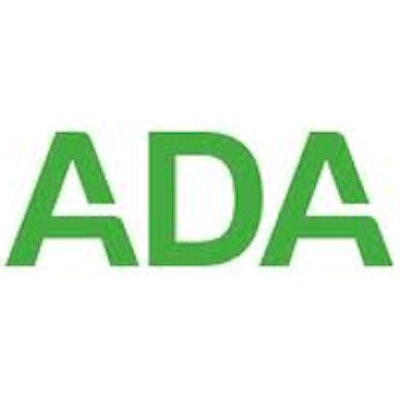
Financial factors are by far the main reason people delay getting needed dental care, according to a new ADA Health Policy Institute report. And access to dental care will become more difficult as millions of children and adults gain dental coverage under the Patient Protection and Affordable Care Act (ACA), the authors noted.
Although the report found the biggest reason that people forego dental care is because they can't afford it, the percentage of those citing financial barriers remained about the same from 2004 (13.9%) to 2012 (12.9%).
And there was some good news. The percentage of people who said they needed dental care during the past year but could not get it fell from 18.2% in 2004 to 14.6% in 2012. Also, the number of children who needed dental care fell from 10.3% to 6.3%, and the number of nonelderly adults who needed dental declined from 23.4% to 19.7%.
The number of people who reported supply-related barriers to dental care fell from 1.7% to 0.7%.
In both time periods, poor adults were the most likely to report financial barriers to dental care.
"The percentage of individuals reporting financial barriers to dental care was much greater than the percentage of people reporting a supply-related barrier to dental care," the authors wrote.
The study included only individuals 2 years and older who had a dental visit in the past and used two-year datasets (2003-2004 and 2011-2012) from the National Health and Nutrition Examination Survey that included responses from about 10,000 people. Nonelderly adults included those age 21 to 64, and elderly adults were those age 65 and older.
The nine-page report, "Most Important Barriers to Dental Care Are Financial, Not Supply Related," by the ADA Health Policy Institute researchers Thomas Wall, Kamyar Nasseh, PhD, and Marko Vujicic, PhD, was released in October.
Background
Dental care among children increased considerably in the early 2000s and held steady from 2003 to 2011, the report noted. The increase among children was driven entirely by gains among lower income groups. Among the elderly, dental care utilization has steadily increased since 2000, which may be associated with an increase in the percentage of elderly people with private dental benefits.
However, among young adults, dental care declined, mainly because they couldn't afford it and didn't have dental insurance.
Studies show that financial barriers in the dental sector remain high relative to other areas of healthcare.
Results
Financial barriers for dental care were relatively low among children, and poor children were more likely to visit a dentist in 2012 than 2004, the report stated.
The states are required to provide dental benefits to children covered by Medicaid
and the Children's Health Insurance Program (CHIP).
"Combined with an increase in utilization from 2000 to 2011 among publicly insured children, this suggests that the public safety net, through state Medicaid and CHIP programs, has been effective in making dental care more accessible to children, regardless of income level," the authors wrote.
Poor adults consistently had the highest levels of financial barriers to dental care, according to the report. Dental benefits for adults have slowly eroded in state Medicaid programs, and fewer adults have private dental insurance, the researchers noted.
The decline in dental coverage has led to increased emergency room visits for dental conditions, especially among young adults.
Sufficient number of dental providers
Few people reported supply-related barriers, according to the report.
"Suggestions that a shrinking dentist workforce is a major constraint to dental care use may need to be re-evaluated," the researchers wrote.
Recent studies show the supply of dental care providers will continue to grow as a result of an increasing number of dental school graduates, dentists postponing retirement, and a greater use of dental auxiliaries.
ACA impact
As a result of the ACA, up to 8.7 million children are expected to gain dental benefits by 2018, including 3.2 million who will gain dental benefits through Medicaid. And about 8.3 million adults are eligible to gain Medicaid dental benefits in 2014.
As of April 2014, about 1.1 million adults got private dental coverage through standalone dental plans in the new health insurance marketplaces.
"The large number of individuals gaining dental benefits will likely result in increased demand for dental care and may lead to increases in supply-related barriers in the future," the authors emphasized.
The researchers also noted that expanded Medicaid coverage does not guarantee increased access to dental care.
"It is important that policymakers put into place the enabling conditions to ensure the expansion population can access care," they concluded.

.hpp4JFpXkV.png?crop=focalpoint&fit=crop&fp-x=0.5&fp-y=0.5&h=100&w=100&auto=format%2Ccompress&q=70)

















